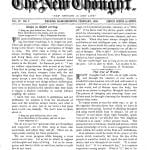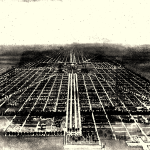U.S. trains may not be the best at moving people, but they’re great at moving everything else. More than 40 percent of U.S. freight miles are done by rail, compared with less than 15 percent in Europe, according to Christopher Barkan, a professor who heads the railroad engineering program at the University of Illinois at Urbana-Champaign. In terms of carbon footprint, that’s a great statistic. The railroad industry likes to brag that it can carry a ton of freight 436 miles on a single gallon of diesel — three times better than a truck can do — but even that is just an average. Some freight lines manage 517 miles.
The problem is that freight track and high-speed track are built with completely different considerations in mind, making it difficult for a country to maintain both a world-class freight network and a first-rate passenger system.
Freight track is familiar to most Americans. The two steel rails are connected by hardwood crosses, known as ties to railroad aficionados. A bed of crushed stone, called ballast, undergirds the ties. This arrangement is extremely durable, and it needs to be. Freight trains weigh several times as much as their high-speed, passenger-carrying cousins. A fully loaded freight car weighs about 150 tons, compared with just 42 tons for the average car in a French high-speed train and even less in Japan.
Freight track can take the punishment of rumbling freight trains for decades with little maintenance, but that doesn’t mean the track doesn’t experience little changes. The wheels push out against the rails, increasing the gauge. (That’s the distance between the rails.) Other forces tend to create horizontal waves or vertical ripples along the track.
Curved sections are a special problem. Think of a NASCAR track. The road is banked around the curves, with the outside of the track higher than the inside to prevent the cars from sliding into the wall. Engineers do the same thing with curved train tracks. In sections where the tracks are banked, the train’s weight falls more heavily on the inside rail. Over time, it drops lower than it should, making the tracks uneven.
A stout freight train, which typically cruises along at about 60 mph, can handle those changes in track conditions. But modern passenger trains that streak over rails at more than 200 mph can’t. Everything has to be precise, or the train could derail with disastrous results.
Most high-speed passenger trains travel along a completely different medium called slab track, in which the rails are bolted into sections of concrete. The concrete holds the rails still, assuring safe travel at high speeds, but it simply can’t handle the tonnage of a freight train. It’s also extremely expensive to build, about 50 percent more than typical freight tracks.
The layout of our tracks is also a major problem. U.S. rails run across roadways at lots of places. Because a collision between a car and a super-fast train would be catastrophic for everyone involved, high-speed rail simply cannot cross roadways.
Our system of rails is also way too curvy for high speeds. Because 19th-century transit engineers didn’t envision trains traveling much more than 60 mph, they built lots of bends into the tracks. High-speed trains have to slow down substantially to negotiate even a banked curve. But in order to straighten out track around population centers — precisely the places where high-speed rail is needed — government would have to extensively use its power of eminent domain to take private property, which would be expensive and politically unpopular.
via Stimulus funds give high-speed rail a kick in the caboose.










